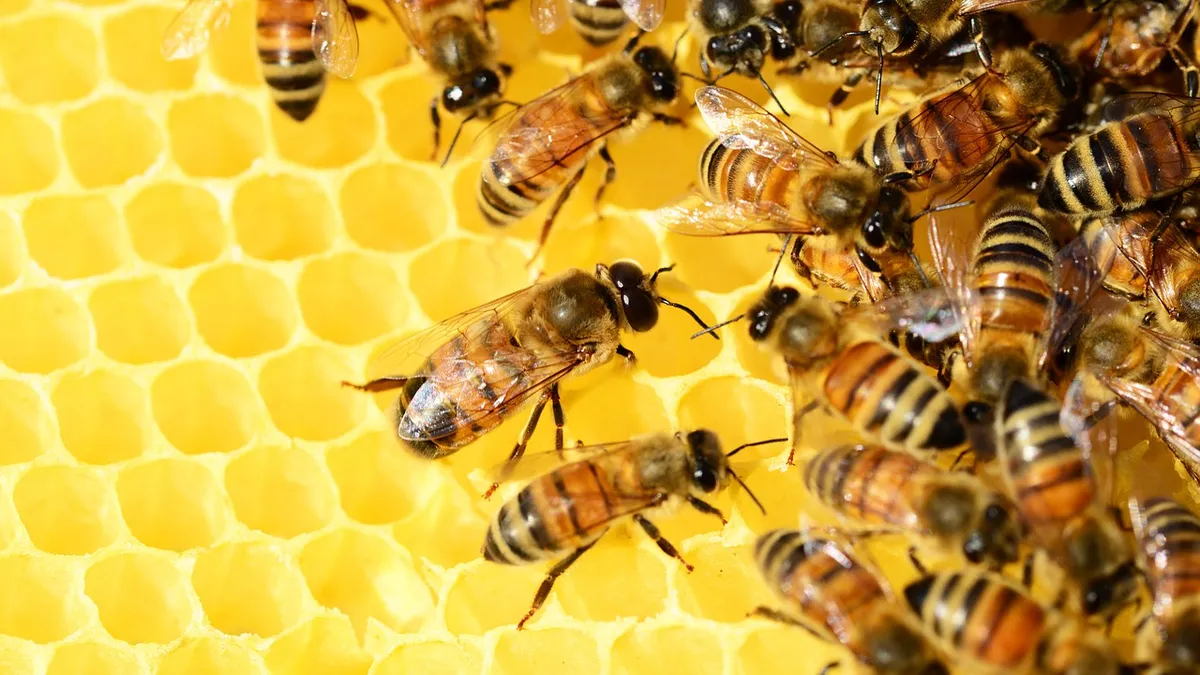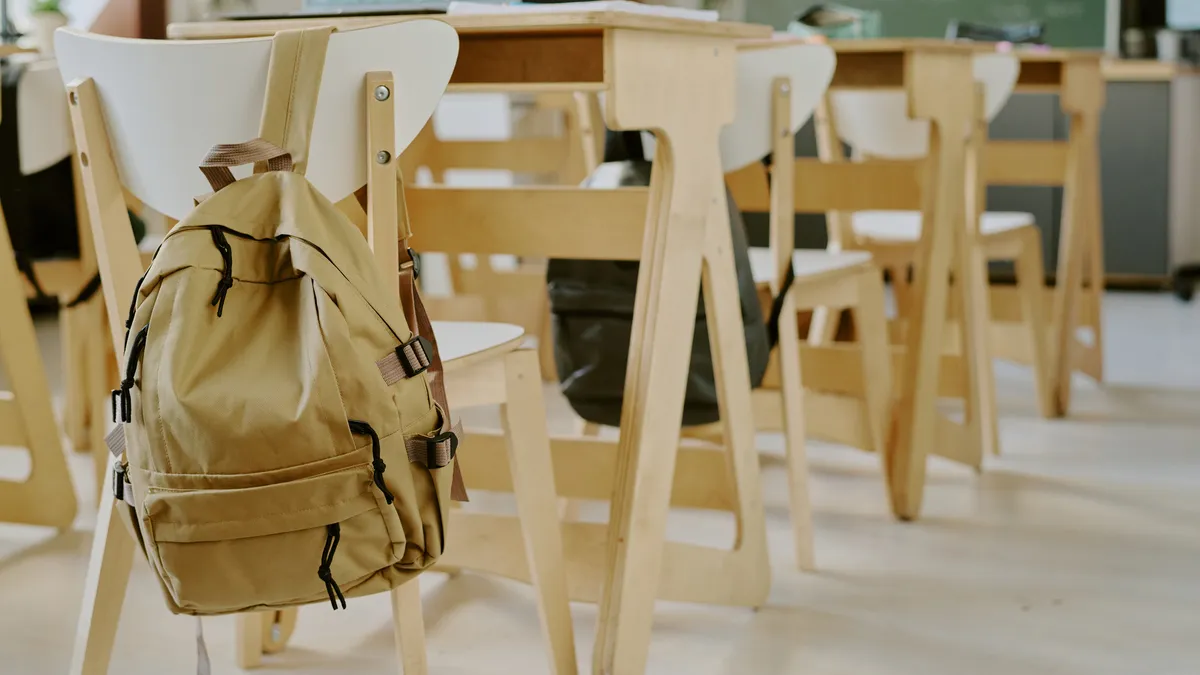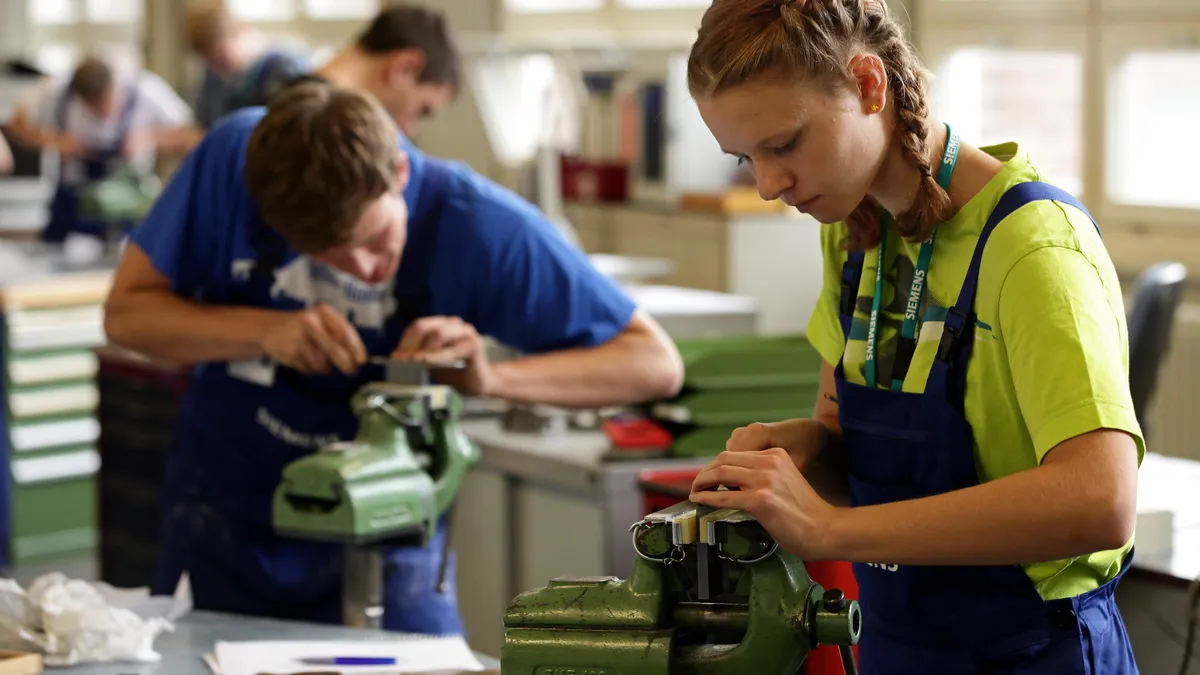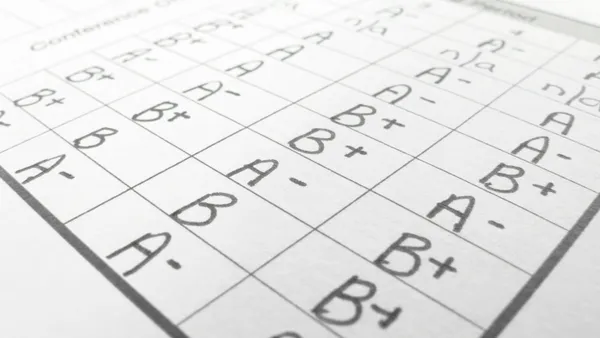As an Advanced Placement (AP) Environmental Science teacher at Kellam High School in Virginia Beach, Virginia, Chris Freeman solidly believes in hands-on learning — particularly when it comes to the beehives kept on campus. The school has 25 beekeeping suits on hand, students are expected to check on the hives regularly and, as Freeman will proudly say, there has not been an increase in bee stings since the hives first appeared six years ago.
“The idea is to get student enthusiasm high, have them attach concepts to data and get them to think through practical decisions that will make the world a better place,” Freeman told Education Dive. “Part of that means switching the science teacher role from being the driver of the ship to being a lighthouse and letting students drive.”
If you talk to people about bees, you might hear stories of being stung as child or the peril bees face today from Colony Collapse Disorder, where worker bees abandon a hive and leave behind their queen. Nearly 80,000 colonies suffered from the disorder in the first quarter of 2018, up 15% from the same quarter in 2017, according to the U.S. Department of Agriculture.
Schools, however, appear to be doing their part to support the lives of bees. There are even organizations working directly with schools to bring more hives into students' lives, from Beepods, which sells beekeeping systems to schools and communities, to the Honeybee Conservancy, which offers free beekeeping guides to educators online.
Building a hive mind
At Kellam High School, beekeeping is a club activity. Students meet twice a week during lunch but can spend more time after school when the weather warms up — Freeman advised against opening a hive when it’s 60 degrees or colder outside — to visit and monitor their hives.
Cathy O’Reilly, an AP Biology at Mamaroneck High School in New York, also runs hives with students. She started her program in October 2017, and of the original students, six are still involved. Twelve students regularly come to meetings and have the core responsibility of caring for the bees. Support, however, comes from the entire school.
The culinary club makes sugar solutions the bees need in early spring and fall, when flowers have stopped blooming or haven’t bloomed at all, and the school’s garden club is planning a pollinator garden to be planted this spring, next to the ornamental science garden laid out three years ago.
At Wisconsin's Northland Pines Middle School, science teacher Todd Wilfer also gives much of the beekeeping responsibility to his students. They even teach what they know to their elementary peers in the district, and his classes get an opportunity to suit up and work with the bees — though during the summer, when school is out, the task falls primarily on Wilfer.
“I make sure they have what they need and stay out of their way,” Wilfer said of the bees.
The cost of entry
The costs to get the hives up and running, plus maintaining them each year, is about $475 for each hive — in addition to the bees, said Wilfer. According to Bee Well Honey Farm, a 3-pound package of honeybees and a queen bee costs roughly $110.
Suits and gloves cost about $125 each, and Wilfer estimates he spends another $500 or so on other equipment. Every year, the school also needs to buy sugar for the bees, do some maintenance on the suits and buy bottles for the honey the students collect.
Freeman said it cost him about $2,000 to get his program where it is today. That includes the beekeeping materials and monitoring devices, which let students gather remote data and look at correlations between sound graphs, hive weight and the bees' activity. But, Wilfer notes, educators should look into whether they live in a state that, like Virginia, has incentives that might cover your costs — if you keep records.
Feeding the bee exchange
Aside from the hands-on science learning beekeeping provides, there’s also a bit of business education in running a beehive, teachers note. Freeman believes beekeeping aligns with a recent trend to bring trade programs back into schools — vocational classes like auto shop, woodshop and industrial arts.
At Northland Pines Middle School, for example, honey is sold through the school office. And Mamaroneck’s O’Reilly said one of the students in her program is doing an extracurricular project that looks directly at the business of beekeeping.
"One of our students is doing her 'Future Business Leaders of America' project explaining how we plan on packaging and selling the honey," she told Education Dive. "She will be giving tastings and will also be showing the packaging we will be using."
Kellam High School students take the business a step further — selling beeswax lip balm and honey, as well as breeding queen bees for sale. Freeman said students can end up with about 32 queen bees each year that can be sold for about $150 to beekeepers who may have lost their own queens. The money, he said, goes to scholarship funds for students interested in pursuing science.
“It’s an interesting way where STEM and trade collide,” said Freeman.
To Freeman, the opportunity to weave bees into learning has been a great experience for his students as well as himself. When working directly with living creatures, rather than following a class-long lesson or procedure with a known start and finish, students are creating their own learning paths — one that Freeman gets to be a part of.
"In this club, we are making a conscious effort about how science can tell an untold story about the world, and how to tease out a story from the data," he said. "That's exciting because I don’t know what they’re going to find, and I get to learn along with them."






 Dive Awards
Dive Awards
















